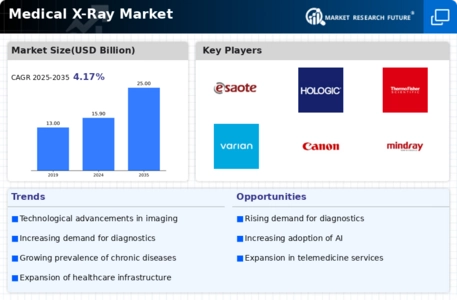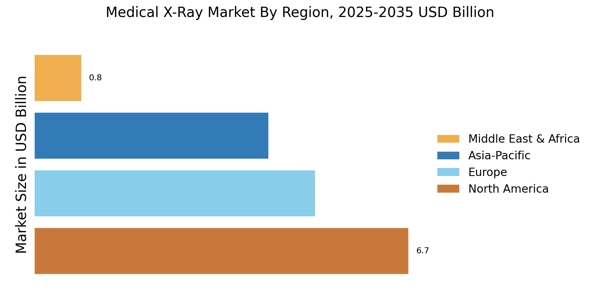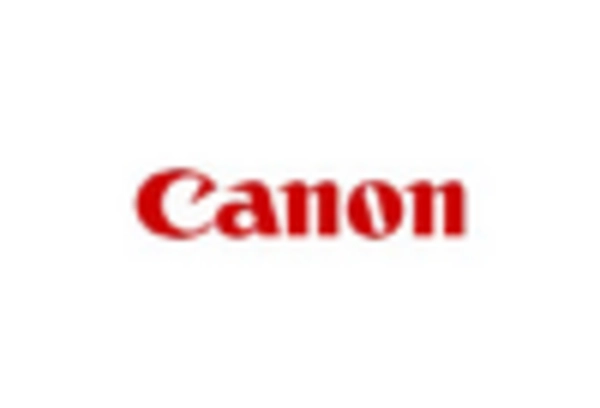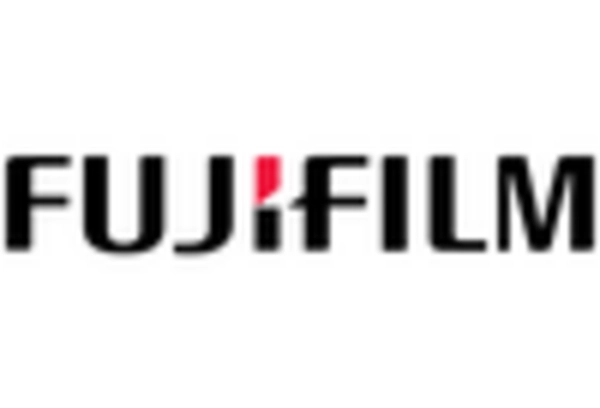Aging Population
The demographic shift towards an aging population is significantly influencing the Medical X-Ray Market. Older adults typically require more medical attention, including diagnostic imaging, due to age-related health issues. As the global population aged 65 and above continues to expand, the demand for X-ray examinations is anticipated to increase. This demographic trend suggests that healthcare facilities will need to upgrade their imaging capabilities to cater to the specific needs of elderly patients. Furthermore, the Medical X-Ray Market may experience a surge in demand for portable and user-friendly X-ray devices, which can facilitate easier access to imaging services for this demographic.
Increased Healthcare Expenditure
Rising healthcare expenditure across various regions is a crucial driver for the Medical X-Ray Market. Governments and private sectors are investing more in healthcare infrastructure, which includes diagnostic imaging facilities. This increase in funding allows for the acquisition of advanced X-ray equipment and the expansion of imaging services. Market analysis suggests that healthcare spending is expected to grow at a compound annual growth rate of approximately 5% over the next few years. As healthcare systems allocate more resources to diagnostic imaging, the Medical X-Ray Market is likely to benefit from enhanced access to X-ray services and improved patient care.
Growing Awareness of Early Diagnosis
There is a growing awareness of the importance of early diagnosis in managing health conditions, which is positively impacting the Medical X-Ray Market. Patients and healthcare providers alike recognize that timely imaging can lead to better treatment outcomes. This awareness is driving demand for X-ray services, as more individuals seek preventive care and regular screenings. Additionally, public health campaigns emphasizing the significance of early detection are likely to further boost the utilization of X-ray technologies. As a result, the Medical X-Ray Market may see an increase in patient volume and a corresponding need for more advanced imaging solutions.
Rising Incidence of Chronic Diseases
The increasing prevalence of chronic diseases such as cancer, cardiovascular disorders, and respiratory ailments is a primary driver of the Medical X-Ray Market. As these conditions necessitate frequent diagnostic imaging for effective management, the demand for X-ray services is expected to rise. According to recent statistics, the incidence of cancer alone is projected to increase, leading to a heightened need for imaging technologies. This trend indicates that healthcare providers are likely to invest more in advanced X-ray systems to enhance diagnostic accuracy and patient outcomes. Consequently, the Medical X-Ray Market is poised for growth as healthcare systems adapt to the rising demand for imaging services.
Technological Innovations in Imaging
Technological advancements in imaging modalities are transforming the Medical X-Ray Market. Innovations such as digital X-ray systems, 3D imaging, and improved image processing software enhance diagnostic capabilities and patient safety. The shift from traditional film-based systems to digital platforms has not only improved image quality but also reduced radiation exposure, making X-rays safer for patients. Market data indicates that the adoption of digital X-ray systems is on the rise, with a projected growth rate of over 6% annually. This trend underscores the importance of continuous innovation in the Medical X-Ray Market, as healthcare providers seek to leverage cutting-edge technology to improve diagnostic accuracy and operational efficiency.


















Leave a Comment